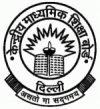(Syllabus) CBSE Class 12th - Economics: Year 2013
Disclaimer: This website is NOT associated with CBSE, for official website of CBSE visit - www.cbse.gov.in
Central Board of Secondary Education
(CBSE Class XII) : Economics Syllabus
Part A : Introductory Microeconomics
Unit 1: Introduction 10 Periods
Meaning of microeconomics and macroeconomics
What is an economy? Central problems of an economy : what, how and for whom to
produce; concepts of production possibility frontier and opportunity cost.
Unit 2: Consumer Equilibrium and Demand 32 Periods
Consumer's equilibrium – meaning of utility, marginal utility, law of
diminishing marginal utility, conditions of consumer's equilibrium using
marginal utility analysis. Indifference curve analysis of consumer's
equilibrium-the consumer's budget (budget set and budget line), preferences of
the consumer (indifference curve, indifference map) and conditions of consumer's
equilibrium.
Demand, market demand, determinants of demand, demand schedule, demand curve,
movement along and shifts in the demand curve; price elasticity of demand -
factors affecting price elasticity of demand; measurenment of price elasticity
of demand – (a) percentage-change method and (b) geometric method (linear demand
curve); relationship between price elasticity of demand and total expenditure.
Unit 3: Producer Behaviour and Supply 32 Periods
Production function: Total Product, Average Product and Marginal Product.
Returns to a Factor.
Cost and Revenue: Short run costs - total cost, total fixed cost, total variable
cost; Average fixed cost, average variable cost and marginal cost-meaning and
their relationship.
Revenue - total, average and marginal revenue.
Producer's equilibrium-meaning and its conditions in terms of marginal
revenue-marginal cost.
Supply, market supply, determinants of supply, supply schedule, supply curve,
movements along and shifts in supply curve, price elasticity of supply;
measurement of price elasticity of supply – (a) percentagechange method and (b)
geometric method.
Unit 4: Forms of Market and Price Determination 22 Periods
Perfect competition - Features; Determination of market equilibrium and
effects of shifts in demand and supply.
Other Market Forms - monopoly, monopolistic competition, oligopoly - their
meaning and features.
Unit 5: Simple applications of Tools of demand and supply 8 Periods (not to be examined)
Part B : Introductory Macroeconomics
Unit 6: National Income and related aggregates 30 Periods
Some basic concepts: consumption goods, capital goods, final goods,
intermediate goods; stocks and flows; gross investment and depreciation.
Circular flow of income; Methods of calculating National Income – Value Added or
Product method,
Expenditure method, Income method.
Aggregates related to National Income:
Gross National Product (GNP), Net National Product (NNP), Gross and Net Domestic
Product (GDP and NDP) - at market price, at factor cost; National Disposable
Income (gross and net), Private Income, Personal Income and Personal Disposable
Income; Real and Nominal GDP. GDP and Welfare
Unit 7: Money and Banking 18 Periods
Money – its meaning and functions.
Supply of money – Currency held by the public and net demand deposits held by
commercial banks.
Money creation by the commercial banking system.
Central bank and its functions (example of the Reserve Bank of India).
Unit 8: Determination of Income and Employment 25 Periods
Aggregate demand and its components.
Propensity to consume and propensity to save (average and marginal).
Short–run equilibrium output; investment multiplier and its mechanism.
Meaning of full employment and involuntary unemployment.
Problems of excess demand and deficient demand; measures to correct them -
change in government spending, availability of credit.
Unit 9: Government Budget and the Economy 17 Periods
Government budget - meaning, objectives and components.
Classification of receipts - revenue receipts and capital receipts;
classification of expenditure - revenue expenditure and capital expenditure.
Measures of government deficit - revenue deficit, fiscal deficit, primary
deficit:their meaning.
Fiscal Policy and its role (non evaluative topic)
Unit 10: Balance of Payments 14 Periods
Balance of payments account - meaning and components; balance of payments
deficit-meaning.
Foreign exchange rate – meaning of fixed and flexible rates and managed
floating.
Determination of exchange rate in a free market.
Recommended textbooks
1. Indian Economic Development, Class XI, NCERT
2. Introductory Micro Economics, Class XII, NCERT
3. Macro Economics, Class XII, NCERT
4. Supplimentary Reading Material in Economics, Class XII, CBSE
Note : The above publications are also available in Hindi Medium
